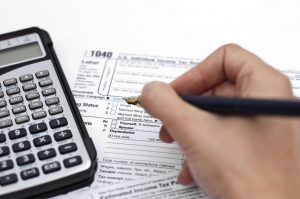
If your partnership does not meet all four requirements in part 6 of Schedule B—for example, if your partnership’s total annual receipts are more than $250,000 or its assets are more than $1 million—then you must fill out Schedules L, M-1, and M-2. All three of these schedules are located on page 5 of your 1065. Foreign partnerships with more than $20,000 annual income in the United States, or those who earn more than 1% of their income in the United States, must file Form 1065.

Form 1065 Instructions: A Step-by-Step Guide
Generally, a partnership may use the cash method of accounting unless it’s required to maintain inventories, has a C corporation as a partner, or is a tax shelter (as defined in section 448(d)(3)). However, for tax years beginning after 2017, any partnership qualifying as a small business taxpayer (defined below) may use the cash method. The IRS may waive the electronic filing rules if the partnership demonstrates that a hardship would result if it were required to file its return electronically. A partnership interested in requesting a waiver of the mandatory electronic filing requirement must file a written request, and request one in the manner prescribed by the Ogden Submission Processing Center. A foreign partnership with U.S. source income isn’t required to file a return if it meets the following requirements. In addition, if a domestic section 721(c) partnership is formed after January 17, 2017, and the gain deferral method is applied, then a U.S. transferor must treat the section 721(c) partnership as a foreign partnership and file a Form 8865, Return of U.S.
What is IRS Form 1065?
Ordinary income (loss) from another partnership that is a PTP isn’t reported on this line. Instead, report the amount separately on Schedule K, line 11, and in box 11 of what is a 1065 Schedule K-1 using code ZZ. For example, don’t include gross receipts from farming on line 1a. Also, don’t include on line 1a rental activity income or portfolio income.

Instructions for Form 1065 (
Line 11, Other income (loss) (code I), previously included a number of bulleted items. These items have been assigned individual codes for Schedule K, line 11, and box 11 of Schedule K-1. Item K was expanded to include an additional checkbox and each item given a separate number.
See Dispositions of Contributed Property , earlier, for more information. If the partnership made such a distribution during its tax year, attach a statement to the contributing partner’s Schedule K-1 that provides the following information. Report each partner’s distributive share of amounts reported on lines 20a and 20b (investment income and expenses) in box 20 of Schedule K-1 using codes A and B, respectively. Enter on line 19b the total distributions to each partner of property not included on line 19a. In box 19 of Schedule K-1, distributions of section 737 property will be reported separately from other property. The codes used when reporting amounts from line 19b in box 19 of Schedule K-1 appear in the headings for the categories.

- Generally, you may use only the amounts shown next to Qualified nonrecourse financing and Recourse to figure your amount at risk.
- Generally, this is because a partner’s adjusted tax basis in its partnership interest includes the partner’s share of partnership liabilities, as well as partner-specific adjustments.
- In Part III, enter the partner’s distributive share of each item of income, deduction, and credit and any other information the partner needs to file the partner’s tax return, including information needed to prepare state and local tax returns.
- Net rental activity income is the excess of passive activity gross income from renting or disposing of property over passive activity deductions (current year deductions and prior year unallowed losses) that are reasonably allocable to the rented property.
Generally, total assets at the beginning of the year (Schedule L, line 14, column (b)) must equal total assets at the close of the prior tax year (Schedule L, line 14, column (d)). If total assets at the beginning of the year don’t equal total assets at the close of the prior year, attach a statement explaining the difference. For IRA partners with an https://www.bookstime.com/ amount reported in box 20, code V, include code AR with the IRA partner’s unique EIN (not the custodian’s EIN). Required reporting for the sale or exchange of an interest in a partnership (codes AB, AC, and AD). Partnerships may use this flowchart to determine if an item of income, gain, deduction, or loss is includible in QBI reportable to partners.
Qualified nonrecourse financing generally includes financing for which no one is personally liable for repayment that’s borrowed for use in an activity of holding real property and that’s loaned or guaranteed by a federal, state, or local government or borrowed from a qualified person. If the partner is a DE, such as a single-member LLC that didn’t elect to be treated as a corporation, the partnership will check the DE box and enter the name and TIN of the DE. If your MAGI (defined below) is $100,000 or less ($50,000 or less if married filing separately), your loss is deductible up to the maximum special allowance referred to in the preceding paragraph.
- For a partnership with more than one qualifying business, the election is made with respect to each business.
- The three types of unrecaptured section 1250 gain must be reported separately on an attached statement to Form 1065.
- If “Yes” is checked, list the ownership percentage by both vote and value.
- With this increasing number your business might be one of the many, who needs to file a 1065 Form.
Generally, the partnership will have income if debt is canceled or forgiven. Amounts related to forgiven Paycheck Protection Program (PPP) loans are disregarded for purposes of this question. The determination of the existence and amount of cancellation of debt income is determined at the partnership level.







